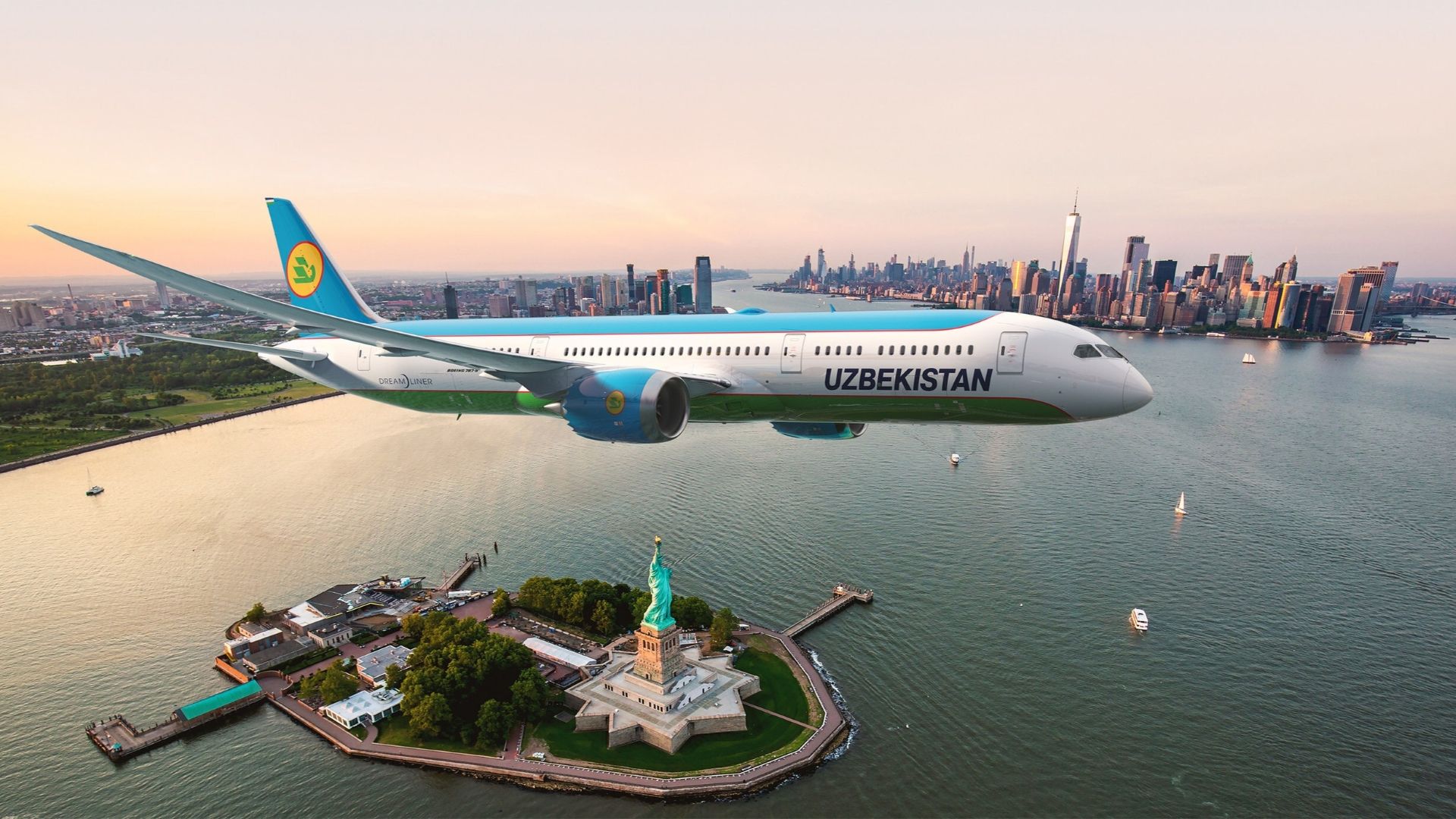World
Uzbekistan Airways Expands Fleet with Major Boeing Dreamliner Order

Uzbekistan Airways has made a significant advancement in its fleet modernization by ordering up to 22 Boeing 787-9 Dreamliners from the United States-based manufacturer. This order includes 14 firm commitments and options for an additional eight aircraft, marking the largest single order in the airline’s history. The airline intends to utilize the new aircraft to enhance its international operations and expand its route network, including potential flights to the United States.
Significance of the Order
The announcement of this order was made during a ceremony at the United Nations General Assembly, attended by Uzbek President Shavkat Mirziyoyev. The event underscored the deal’s importance in establishing Uzbekistan as a key aviation hub in Central Asia. According to a statement from Boeing, this transaction is not just a contract but part of a broader initiative to strengthen aviation ties between Boeing and the Uzbekistan Ministry of Transport. The two parties have signed a Memorandum of Cooperation to explore further opportunities for collaboration in expanding the country’s aviation ecosystem.
Shukhrat Khudaikulov, Chair of Uzbekistan Airways, expressed optimism about the deal, stating, “With this new contract, we are further strengthening both our airline’s and our nation’s position as a leading aviation hub in Central Asia, while providing our passengers with greater global connectivity. This step reaffirms our ambitions and strategic commitment to sustainable growth.”
Enhanced Capacity and Range
The Boeing 787-9 Dreamliner offers significant advantages over the smaller 787-8 model currently in service with Uzbekistan Airways. The 787-9 can cover a distance of up to 7,565 nautical miles (approximately 14,010 kilometers) with a capacity of 296 passengers in a two-class configuration. In contrast, the 787-8 has a range of 7,305 nautical miles (about 13,530 kilometers) with a maximum of 248 passengers. These enhancements in range and capacity will enable Uzbekistan Airways to increase its international footprint significantly.
The airline’s existing fleet includes seven Boeing 787-8 Dreamliners, which are on average 7.5 years old. These aircraft feature two seating configurations, one accommodating 270 passengers—with 24 business class seats and 246 economy class seats—and another with a total capacity of 246 passengers. The latter configuration has a more spacious layout, allowing for a more comfortable passenger experience.
As Uzbekistan Airways prepares for the delivery of the new aircraft, scheduled to begin in 2031, the airline is positioning itself to expand its international routes, targeting destinations in the United States and other long-haul markets. Boeing has noted that the demand for international travel continues to rise, which aligns with Uzbekistan Airways’ strategic goals.
The order for the 787-9 Dreamliner is a crucial step for Uzbekistan Airways as it aims to enhance its operational capabilities and solidify its presence in the global aviation market. With the new aircraft, the airline is set to transform Tashkent into a prominent transit hub, fostering better connectivity for travelers across the region.
-

 Science3 months ago
Science3 months agoToyoake City Proposes Daily Two-Hour Smartphone Use Limit
-

 Top Stories3 months ago
Top Stories3 months agoPedestrian Fatally Injured in Esquimalt Collision on August 14
-

 Health3 months ago
Health3 months agoB.C. Review Reveals Urgent Need for Rare-Disease Drug Reforms
-

 Technology3 months ago
Technology3 months agoDark Adventure Game “Bye Sweet Carole” Set for October Release
-

 World3 months ago
World3 months agoJimmy Lai’s Defense Challenges Charges Under National Security Law
-

 Lifestyle3 months ago
Lifestyle3 months agoVictoria’s Pop-Up Shop Shines Light on B.C.’s Wolf Cull
-

 Technology3 months ago
Technology3 months agoKonami Revives Iconic Metal Gear Solid Delta Ahead of Release
-

 Technology3 months ago
Technology3 months agoApple Expands Self-Service Repair Program to Canada
-

 Technology3 months ago
Technology3 months agoSnapmaker U1 Color 3D Printer Redefines Speed and Sustainability
-

 Technology3 months ago
Technology3 months agoAION Folding Knife: Redefining EDC Design with Premium Materials
-

 Business3 months ago
Business3 months agoGordon Murray Automotive Unveils S1 LM and Le Mans GTR at Monterey
-

 Technology3 months ago
Technology3 months agoSolve Today’s Wordle Challenge: Hints and Answer for August 19









